
Den Russiske Revolution i 1917 er mere end det 20. århundredes vigtigste revolution, som Den Franske Revolution i 1789 var revolutionen i dét århundrede.
Vi har samlet denne emneliste for at belyse udviklingen i Den Russiske Revolution mellem marts–november 1917, og for at fokusere på erfaringerne for de revolutionære traditioner på venstrefløjen.

Indhold:
Fra februar til oktober 1917
Kronologiske temaer i den russiske revolution
Debatter om 1917: Arbejderrevolution eller statskup
Samtidig debat
Nyere debat
Den Russiske Revolution 1912-1922
Forord
Den Russiske Revolution i 1917 er mere end det 20. århundredes vigtigste revolution, som Den Franske Revolution i 1789 var revolutionen i dét århundrede.
Den Russiske Revolution er et højdepunkt for vor tids vigtigste sociale kraft, den industrielle arbejderbevægelse, den var inspirationen for arbejderbevægelsens venstrefløj og revolutionen var omdrejningspunktet for den historiske splittelse i arbejderbevægelsen mellem socialdemokrater og kommunister.
Vi har samlet denne emneliste for at belyse udviklingen i Den Russiske Revolution mellem marts–november 1917 (se nedenfor), og for at fokusere på erfaringerne for de revolutionære traditioner på venstrefløjen.
Derfor er emnelisten også samlet bredt fra kilder, som grundlæggende er positive over for revolutionen. De ikke-marxistiske analyser, især fra anarkistiske kilder, findes i sektionen Sites og artikelsamlinger, mens den debat, som vi har valgt at fokusere på om revolutionens karakter, findes bredt samlet i sektionen Arbejderrevolution eller statskup.
Da de fleste kilder behandler revolutionen i 1917 i sammenhæng med russisk social og politisk historie, både før og efter 1917, har vi lavet en bredere kronologisk afgrænsning ca. 1905-1921, men med revolutionsforløbet i 1917 i centrum.
Revolutionens udvikling og radikalisering i 1917 gennem kronologiske faser og begivenheder er samlet i Kronologiske temaer i den russiske revolution, hvor flere hovedværker er splittet kronologisk op.
Bjarne A. Frandsen
& Jørgen Lund
Påbegyndt oktober 2007
Se også den nyere linkbox Den Russiske Revolution 100 år (Socialistisk Bibliotek). Med 2017-analyser, boganmeldelser og debat.
Kronologi
Kronologien i hele emnelisten og herunder følger den gamle (julianske) kalender indtil februar 1918, da man gik over til den vestlige gregorianske kalender. Datoerne er ofte nævnt i (paranteser), fx februarrevolutionen 25. februar (8. marts) 1917, opstanden 25. oktober (10. november) 1917 osv.
Den Russiske Revolution
(Slagmark, 2017)
- Tidslinje (1905-1921)
Marxists Internet Archive
Spartacus Educational
- Chronology of the Russian Revolution (1869-1918)
Lenin. Vol. 2: All Power to the Soviets
By Tony Cliff (Pluto Press, 1976)
- Chronology (1914-1917)
Socialism Today (February-December 2017)
- Russian Revolution timeline: February 1917 – March 1917 – April 1917 – May 1917 – June 1917 – July/August 1917 – September 1917 – October 1917 – November 1917 – December 1917-1940
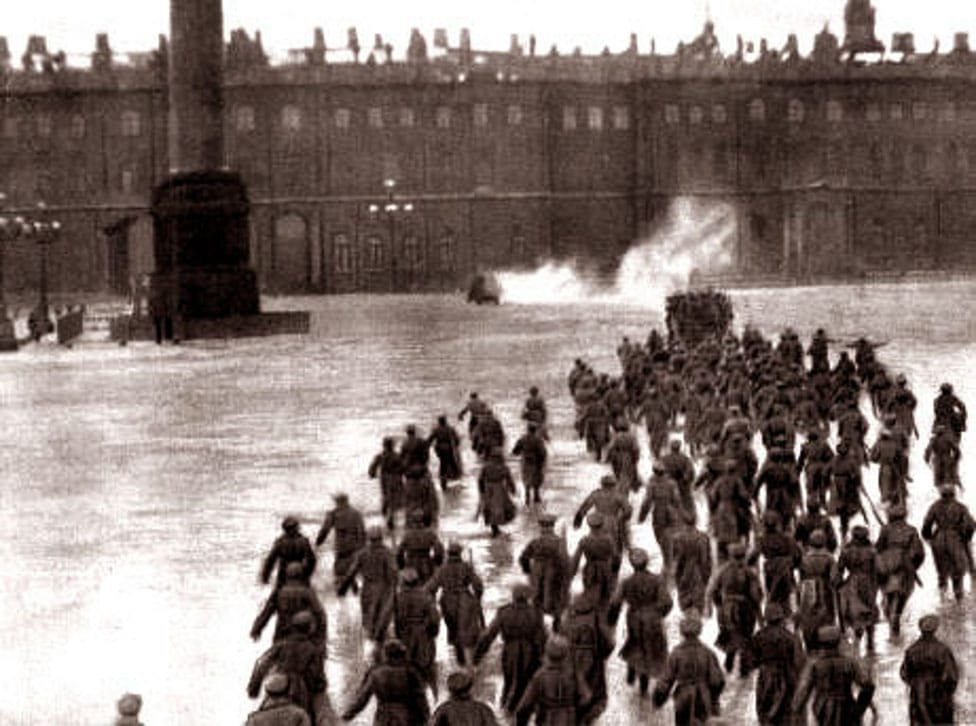
Fra februar til oktober 1917
På dansk
Leksikon for det 21. århundrede
- Oktoberrevolutionen. Af Jens Petter Nielsen.
His2rie.dk
- Den russiske revolution. Af Dennis Lunding Nielsen (Frydenlund, 2014, 136 sider). Se Kildetekster (42 stk.).
Modkraft.dk
- Revolutionens korsveje. Af Roy Medvedev (29. august 2007). Artiklen er tidligere bragt i Socialisten med titlen “80 år efter 1917” (nr.69, 7. november 1997; tillæg Ratata, 8 sider)
“Den russiske revolution trækker tråde ud i hele det tyvende århundredes historie. Men dens udvikling blev selv afgjort af politiske valg i krydsfeltet mellem tvang og vilje. Roy Medvedev diskuterer revolutionens første år.”
Fra Novemberrevolutionen til Brest-Litovsk-freden
Af L. Trotzky (Europæisk Forlag, 1919, 150 s.)
“Dette skrift er for størstedelen forfattet i fritimer i et miljø, der kun lidet opmuntrede til systematisk arbejde; mellem møderne ved fredsforhandlingerne i Brest-Litovsk blev der gjort udkast til de enkelte kapitler i denne skitse, hvis egentlige opgave består i at gøre det internationale proletariat bekendt med den russiske oktoberrevolutions årsager, forløb og betydning.”

V.I. Lenin
- Om proletariatets opgaver i den nuværende revolution (Aprilteserne) (7. april 1917)
- Om dobbeltmagten (9. april 1917)
- Marxisme og opstand (13. september, 1917)
- Krisen er modnet (29. september, 1917)
- En udeforståendes råd (8. oktober, 1917)
- Til Ruslands borgere (25. oktober, 1917)
Den russiske revolution
Af Steve Wright (Internationale Socialisters Forlag, 1987, 27 s.)
“Denne pjece handler om vejen til 1917, og specielt om opbygningen af Bolsjevikpartiet.”
Revolution
- Den russiske revolution, del 1-3. Af Marie Frederiksen (11.-24. januar 2012)
“[Disse artikler] handler om den russiske revolution, som den udspillede sig i de otte måneder i 1917 fra Februarrevolutionen, der væltede tsaren, og indsatte et ustabilt borgerligt styre, til arbejderklassens magtovertagelse, med bolsjevikkerne i spidsen, i oktober.”
10 dage der rystede verden
Af John Reed (1919/Sputnik 1987)
“Det er med den største interesse og usvækket opmærksomhed, jeg har læst John Reeds bog “Ti dage, der rystede verden”. Jeg anbefaler den uforbeholdent til arbejderne i hele verden. Her er en bog, som jeg gerne ville se udgivet i millioner af eksemplarer og oversat til alle sprog. Den giver en sandfærdig og overordentlig levende fremstilling af begivenheder, der er betydningsfulde for forståelsen af, hvad den proletariske revolution og proletariatets diktatur virkelig er.” (V.I. Lenin, 1919).
In English
Video: The Russian Revolution
Timeline with John Rees (YouTube.com, 15 July 2010, 20 min.).
Bolshevism: The Road to Revolution
By Alan Woods (Wellred Publications, 1999)
- Part 6: The year of revolution (p.503-620)
Class Struggles in the USSR. First Period: 1917-1923
By Charles Bettelheim (Monthly Review Press, 1976)
- Part 1: The October Revolution and the establishment of Soviet power (p.65-132)
The History of the Russian Revolution
By Leon Trotsky (1932-33)
“This is Trotsky’s monumental history of the first successful workers revolution. In three volumes, this book was written some 13 years after the victory of the October Revolution. It traces the revolutionary strategy employed by the Bolsheviks to lead the masses of Russia’s workers and peasants to power. Details of the inner workings of the Bolshevik Party are explored as well as the political positions of all the major characters and groupings that participated in the revolution.” See Neil Davidson: History from below (Jacobin, 12 January 2018). På svensk: Historien underifrån (pdf) (Marxistarkiv.se, 29.01.2018).
Lenin. Vol. 2: All Power to the Soviets
By Tony Cliff (Pluto Press, 1976, 412 s.)
Marxists Internet Archive
- The October Revolution
“Eye-Witness reports and analyses of the Revolution by its participants and links to historical documents.”
The Petrograd workers and the Fall of the Old Régime: From the February Revolution to the July Days, 1917 (pdf)
By David Mandel (Macmillan, 1983, 213 p.)
“This is a study of the first months of the Russian Revolution as seen from the factory districts of Petrograd, the ‘red capital’.”
Six Red Months in Russia
By Louise Bryant (George H. Doran Company, 1918)
“An observers account of Russia before and during the proletarian dictatorship.”
The Russian Revolution of 1917
(Socialist Alternative, October 1987)
With articles by Peter Taaffe, Kevin Ramage, Lynn Walsh, Tony Cross, Leon Trotsky, Rob Sewell and John Pickard.
Socialist Worker (UK)
- 1917 – Russia in revolution (Issue 2075, 3 November 2007)
“… a Socialist Worker special to commemorate the 90th anniversary of the Russian Revolution.” Scroll down to Features.
Socialist Worker (US)
- Feature: The Russian Revolution of 1917, Part 1-11 (February-November 2007)
“Socialist Worker marks the 90th anniversary of the Russian Revolution with this series of articles outlining its course and consequences.”
Ten Days that Shook the World
By John Reed (Boni & Liveright, 1919)
“John Reed’s Ten Days that Shook the World represents one of the 20th Century’s greatest political-literary achievements, being one of the first book length eye-witness accounts of the great Russian October Revolution.”
Wikipedia, the free encyclopedia
Year One of the Russian Revolution
By Victor Serge (1930/Holt, Reinhart, and Winston,1972)
- Chapter 2: The Insurrection of 25 October 1917 (p.52-81)
Se også på Socialistisk Bibliotek:
- Tidslinjen 8. marts 1917 om Februarrevolutionen
Kronologiske temaer i den russiske revolution:
Februarrevolutionen / The February Revolution
Bolshevism – The Road to Revolution
By Alan Woods (1999)
Part 6: The year of revolution:
- The February Revolution + The Bolsheviks in February (p.503-517)
- The Mensheviks and the February Revolution + The Bolsheviks and the Provisional Government (p.517-532)
The History of the Russian Revolution
By Leon Trotsky (1932-33)
- Chapter 7: Five Days (p.109-139). See also chapter 8-10 (p.140-201)
Lenin. Vol. 2: All Power to the Soviets
By Tony Cliff (1976)
- Chapter 6: From the February Revolution to dual power (p.77-96)
- Chapter 7: Lenin rearms the party (p.97-139)
Wikipedia, the free encyclopedia
April-dagene / The April Days
Bolshevism – The Road to Revolution
By Alan Woods (1999)
Part 6: The year of revolution:
- Lenin Rearms the Party (p.533-545)
- All Power to the Soviets (p.546-559)
The History of the Russian Revolution
By Leon Trotsky (1932-33)
- Chapter 17: The ‘April Days’ (p.312-334)
Lenin. Vol. 2: All Power to the Soviets
By Tony Cliff (1976)
- Chapter 7: Lenin rearms the party (p.97-139)
- Chapter 8: Lenin, the party and the proletariat (p.140-169)
Juli-dagene / The July Days
Bolshevism – The Road to Revolution
By Alan Woods (1999)
Part 6: The year of revolution:
- The July Days (p.559-576)
The History of the Russian Revolution
By Leon Trotsky (1932-33)
- Chapter 24-26: The July Days (p.17-70)
Lenin. Vol. 2: All Power to the Soviets
By Tony Cliff (1976)
- Chapter 14: The July Days (p.258-272)
- Chapter 15: Reaction on the move (p.272-294)
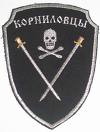
Kornilov-kontrarevolutionen / Kornilov Counterrevolution
Bolshevism – The Road to Revolution
By Alan Woods (1999)
Part 6: The year of revolution:
- The Kornilov Rebellion (p.576-594)
The History of the Russian Revolution
By Leon Trotsky (1932-33)
- Chapter 32: Kornilov’s Insurrection (p.201-217)
Lenin. Vol. 2: All Power to the Soviets
By Tony Cliff (1976)
- Chapter 16: The Kornilov Coup (p.294-314)
Oktoberrevolutionen / The October Revolution
10 dage der rystede verden
Af John Reed (1919)
“Det er med den største interesse og usvækket opmærksomhed, jeg har læst John Reeds bog “Ti dage, der rystede verden”. Jeg anbefaler den uforbeholdent til arbejderne i hele verden. Her er en bog, som jeg gerne ville se udgivet i millioner af eksemplarer og oversat til alle sprog. Den giver en sandfærdig og overordentlig levende fremstilling af begivenheder, der er betydÂningsfulde for forståelsen af, hvad den proletariske revolution og proletariatets diktatur virkelig er”. (V.I. Lenin, 1919).
Leksikon for det 21. århundrede
Class Struggles in the USSR. First Period: 1917-1923
By Charles Bettelheim (1976)
- Part 1: The October Revolution and the establishment of Soviet power (p.65-132)
The History of the Russian Revolution
By Leon Trotsky (1932-33)
- Chapter 46: The October Insurrection (p.257-280)
Lenin. Vol. 2: All Power to the Soviets
By Tony Cliff (1976)
- Chapter 19: Lenin calls up the insurrection (p.335-379)
Wikipedia, the free encyclopedia
Year One of the Russian Revolution
By Victor Serge (1930)
- Chapter 2: The Insurrection of 25 October 1917 (p.52-81)
Debatter om 1917: Arbejderrevolution eller statskup
Samtidig debat
På dansk
Leo Trotskij
- Til forsvar for Oktober (Københavnertalen)
(33 s.).
“Tale holdt af Trotskij 27. nov. 1932 i Idrætshuset, København, for en tæt pakket sal med 2.000 tilhørere.”
V.I. Lenin
- Den proletariske revolution og renegaten Kautsky (U.V., bd.11, s.113-206).
“Lenin påbegyndte udarbejdelsen af brochuren Den Proletariske Revolution Og Renegaten Kautsky i begyndelsen af oktober 1918, straks efter at have læst K. Kautskys brochure Proletariatets Diktatur, hvor denne, 2. internationales førendes ideolog, i enhver henseende forvanskede og forfladigede den marxistiske teori om den socialistiske revolution og proletariatets diktatur.”
Se også:
- Revolutionen i Rusland (pdf). Af Reinhold Mac (Nyt Nordisk Forlag, 1917, 168 s.; online på Det Kongelige Bibliotek).
- Den russiske revolution (pdf). Af Anna Mironowna Leepa (Socialdemokratisk Ungdomsforbund i Danmark, 1917, 23 s.; online på Det Kongelige Bibliotek).
- Lenin-Trotzki: de blodige dage i Rusland (pdf). Af M.S. [i.e. Michael Sukennikow] (Nordiske Forfatteres Forlag, 1918, 86 s.; online på Det Kongelige Bibliotek).
- Revolutionen i fare (pdf) (Danmarks Socialistiske Arbejderpartis Forlag, 1918, 8 s.; online på Det Kongelige Bibliotek).
- I Bolschewikernes Rusland: indtryk fra en studierejse (pdf). Af Ernst Christiansen (Socialdemokratisk Ungdomsforbunds Forlag, 1919, 32 s.; online på Det Kongelige Bibliotek).
- Arbeidernes Rusland: historik og mosaik (pdf). Av Arvid Hansen (Det Norske Arbeiderpartis Forlag, 1919, 102 s.; online på Det Kongelige Bibliotek).
- I Lenins land (pdf). Av Michael Puntervold (Helge Erichsens Forlag, 1919, 214 s.; online på Det Kongelige Bibliotek).
- Sovjet-Rusland (pdf). Av Emil Stang (Det Norske Arbeiderpartis Forlag, 1919, 94 s.; online på Det Kongelige Bibliotek).
- Hvad mente man i Danmark om den russiske revolution? Af Georg Moltved (Zenit: Nordisk Socialistisk Tidskrift, nr.4, 1967, s.101-105).
- The Russian Revolution and the Danish labour movement (pdf). By Morten Thing (Socialismo Storia, Milano, nr.3, 1991, s.177-219; online på RUC).
- Danmarks socialdemokrati og den russiske borgerkrig (pdf). Af Aleksander Kan (Arbejderhistorie, nr.3, 1997, s.1-9).
- “Russiske Bolsheviker: iagtagelser af en fra Rusland hjemvendt dansker” (pdf). Af John T. Lauridsen (Magasin fra Det Kongelige Bibliotek, årg.17, nr.3, 2004, s.10-34: online på Tidsskrift.dk).
- Det danske borgerskab og den Russiske revolution. Af Kalle Kühlmann (Revolution, 20. februar 2017) + Del 2 (16. april 2017) + Del 3 (18. maj 2017).
- Oktoberrevolutionen og den danske venstrefløj: socialistiske presserøster i samtiden. Af Julie Birkedal Riisbro (pdf) (Arbejderhistorie, nr.2, 2017, s.61-93).
- Den pansrede næve og den udstrakte hånd: reaktioner på revolutionære bevægelser i Danmark (pdf). Af Kristina Krake (Arbejderhistorie, nr.2, 2017, s.94-117).
In English
Karl Kautsky
- The Dictatorship of the Proletariat (1918).
“The present Russian Revolution has, for the first time in the history of the world, made a Socialist Party the rulers of a great Empire … the Socialist Party which governs Russia to-day gained power in fighting against other Socialist Parties, and exercises its authority while excluding other Socialist Parties from the executive.” - Terrorism and Communism (1919).
“My starting point represented the central problem of modern Socialism, the attitude of Social Democracy to Bolshevik methods. But since Bolshevism had, of its own accord, referred to the Paris Commune of 1871 as being to some extent its precursor and its prototype … I undertook to draw a parallel between the Commune and the Soviet Republic.” - The Lessons of the October Experiment (1925).
“This article was published in 1925 in the journal Die Gesellschaft. In it Kautsky polemicises against Trotsky’s Lessons of October, a German translation of which had appeared earlier that year under the title 1917 – Lessons of the Russian Revolution.”
V.I. Lenin
- The Proletarian Revolution and the Renegade Kautsky
“Kautsky’s pamphlet, The Dictatorship of the Proletariat, recently published in Vienna (1918) is a most lucid example of that utter and ignominious bankruptcy of the Second International about which all honest socialists in all countries have been talking for a long time.”
Rosa Luxemburg
- The Russian Revolution (1918).
“In Russia, the problem could only be posed. It could not be solved in Russia. And in this sense, the future everywhere belongs to ‘Bolshevism’.”
Debate: - Rosa Luxemburg’s criticism of the Bolsheviks in power. By Tony Cliff. From his book Rosa Luxemburg (1959).
- Critical observations on Rosa Luxemburg’s ‘Critique of the Russian Revolution’ (1923). By Georg Lukacs. From his book History and class consciousness (1971).
Karl Radek
- Dictatorship and Terrorism (1920).
“The Radek brochure was endorsed by Trotsky as a suitable answer to Kautsky’s criticism of his book Terrorism and Communism : A Reply to Karl Kautsky (1920).”
See Introduction by Daniel Gaido.
Leon Trotsky
- Terrorism and Communism. A Reply to Karl Kautsky (1920).
“This book was written by Leon Trotsky at the height of the Russian Civil War. While it is a polemical response to German social-democrat Karl Kautsky, it is also represents the Bolshevik defense of the extraordinary means the young workers’ republic had to take in order to defend itself from the almost two dozen armies that were on its soil trying to turn back the revolution.” - The Lessons of October (1924). See Introduction by Duncan Hallas (1987).
- In Defence Of October (1932). A speech delivered in Copenhagen, Denmark in November 1932. See Introduction by Robin Clapp (2002).
Nyere debat
På dansk (og norsk/svensk)
Arbejderhistorie
- Aleksander Kan: Danmarks socialdemokrati og den russiske borgerkrig (pdf) (nr.3, 1997, s.1-9).
“I anledning af 80-året for Oktoberrevolutionen i Rusland undersøges behandlingen i den danske socialdemokratiske presse af den efterfølgende russiske borgerkrig.”
Autonom Infoservice
- Oktober-revolutionen 1917: En venstreradikal analyse (25. oktober 2009).
Indhold: 1. Tilblivelsen af den russiske revolution – 2. Oktoberrevolutionens forskellige opstandscentre – 3. Tiden efter revolutionen – 4. Kvinderne og den russiske revolution – 5. Remember Kronstadt!
International Socialisme
- Freddie Nielsen og Ågot Berger: Den russiske revolution: Oprør eller kup? Førte Lenin til Stalin? (nr. 1, februar 1992, p.5-16).
“Holdningen til oktoberrevolutionen har ikke blot historisk interesse, skiller ikke blot mellem dem, som mener, at revolutionen var en nødvendig fortsættelse af februarrevolutionen, og dem, der ser den som et overgreb på en demokratisk udvikling i Rusland. Den skiller typisk også i dag dem, som mener, at det er nødvendigt med en revolutionær omvæltning i vores samfund, og dem, som vil bevare det bestående.”
Lars Henrik Carlskovs blog
- Boris Kagarlitskij: Rusland 1917 og den globale revolution (november 2007).
“Hvorfor slog den russiske revolution fejl? Var Rusland overhovedet klar til en socialistisk revolution? Og hvordan kan man forklare, at Stalin kom til magten? Det er nogle af de spørgsmål, den russiske sociolog Boris Kagarlitskij forsøger at besvare i denne artikel.” - Paul Le Blanc: Lenin og det revolutionære demokratis udfordring (november 2007).
“I år har den russiske revolution 90-års jubilæum. Den amerikanske historiker Paul Le Blanc giver her en kritisk evaluering af arven fra Lenin.”
Marxistarkiv.se
- Eric Hobsbawm: Kan vi skriva ryska revolutionens historia? (pdf).
“Den kände engelske marxistiske historikern Hobsbawm om den ryska revolutionen (ur hans bok ‘Om historia’). Artikeln är hans Isaac Deutscher-föreläsning från 1996.” - Kevin Murphy: Kan vi skriva ryska revolutionens historia? (pdf)
“Murphys Isaac Deutscher-föreläsning från 2006, där han går i svaromål på Hobsbawm föreläsning från 10 år tidigare.” - Ernest Mandel: Oktoberrevolutionen, statskupp eller revolution? (pdf).
“En längre artikel som Mandel skrev till den ryska revolutionens 75-årsjubileum 1992.” Dansk udgave: Oktober 1917: statskup eller revolution? (Socialistisk Arbejderforlag, 1997, 121 s.) - Lenin: Massmördare? (pdf) (Moteld! / Internationalen, 1999, 88 s.):
Daniel Bensaid: ”Kommunismens svarta bok” – ett svar från vänster (s.9-38).
“Om det inte längre handlar om att undersöka regimer, perioder, preciserade konflikter utan om att kriminalisera en idé, hur många döda skulle man inte kunna tillskriva kristendomen och evangelierna, liberalismen och ”låt gå”-attityden? Ãven om man skulle acceptera Courtois fantasifulla beräkningar, skulle kapitalismen ha kostat många fler än stalinismens 20 miljoner döda i Ryssland under loppet av detta sekel i två världskrig.” Også online på Marxists.org - Håkan Blomqvist: Var Lenin en massmördare? (s.41-72).
“De politiska motiven bakom Courtois’ bok och strömmen av historierevisionism i synen på Lenin och Oktoberrevolutionen är närmast övertydliga. I marknadens och liberalismens tidsålder ska inte sten på sten lämnas kvar av försöken att finna alternativ till den etablerade världsordningen.”
Modkraft.dk
- Mikael Hertoft: Den russiske revolution i bagklogskabens lys (september 2007).
“Det bredeste og mest autoritative værk om den russiske historie på dansk er Politikens Ruslands historie. I dette firebindsværk er den russiske revolution forsvundet ned i et hul, et redaktionelt hul så at sige.” - Roy Medvedev: Revolutionens korsveje (september 2007). Artiklen er tidligere bragt i Socialisten med titlen “80 år efter 1917” (nr.69, 7. november 1997; tillæg Ratata, 8 sider).
“Den russiske revolution trækker tråde ud i hele det tyvende århundredes historie. Men dens udvikling blev selv afgjort af politiske valg i krydsfeltet mellem tvang og vilje. Roy Medvedev diskuterer revolutionens første år.”
Hertoft og Medvedevs artikler er også udgivet i en pjece redigeret af Mikael Hertoft: Den russiske revolution 90 år (Dansk-Russisk Forening i København, 1997, 64 sider). Hertoft artikel side 5-21, og Medvedevs side 22-51 (med titlen: Den russiske revolution 90 år).
Socialistisk Arbejderavis
- Mike Haynes: Rusland 1917: Massernes magt (nr.274, 29. november 2007).
“Alle revolutioner slår fejl, siger de, og Rusland var den største fejltagelse af alle … Den virkelige historie viser noget helt andet. Revolutioner kan sandelig være uregerlige, men også kreative.” - Chris Bambery: 1917: Den russiske revolution (nr.274, 29. november 2007).
“Den russiske revolution i 1917 indvarslede begyndelsen på et radikalt nyt samfund. Arbejderkontrol over produktionen, jord til de bønder, der arbejdede på den, en øjeblikkelig afslutning af krigen samt koloniserede folkeslags ret til selvbestemmelse.”
Socialistisk Information
- Alan Maass: Rusland 1917: Sådan blev scenen sat for en revolution (21. januar 2017). Artiklen er fra 2007.
“Den russiske revolution i 1917 er en påmindelse om, at de kampe, der ændrer verden, ofte finder sted der, hvor man ikke forventer det – hvor mulighederne for succes synes mindst gunstige.”
Socialistiska Partiet
- Håkan Blomqvist: Var Lenin en massmördare? (Moteld, nr.1, 1999).
“Kanonaden mot Lenin och den ryska Oktoberrevolutionen 1917 mullrar fram med tilltagande styrka över offentligheten i öst som väst. På universitet och tidningsredaktioner, inom kulturlivet och politiken håller en revidering av historien på att cementeras som syftar till att helt omvärdera förståelsen av seklet.”
In English
Against the Current
- Sarah Badcock: The crisis of revolutionary power (No.140, May/June 2009). Review of Alexander Rabinowitch’s book: The Bolsheviks in Power: The First Year of Soviet Rule in Petrograd (2007).
“The book under review … is a meticulous and painstaking history, showing us the gaps and exploring the confusions of a tightly defined period. Rabinowitch is not afraid of asking the big questions surrounding this period, and addressing the fundamental problems.” - Samuel Farber: The Russian Revolution in retreat (No.136, September/October 2008). Review of Simon Pirani’s book: The Russian Revolution in retreat, 1920-24: Soviet workers and the new Communist elite (2008)
“Pirani’s work focuses on the issue of soviet and workplace democracy and is based on an exhaustive investigation of archival materials concerning Moscow, including the Communist Party, the Cheka-GPU, and workplace organizations … The richness of detail and originality of Pirani’s research is remarkable.” See also the books site (Revolutioninretreat.com). - Simon Pirani: Notes from a revolution dying (No.134, May/June 2008).
“It was heartening to discover the wide spectrum of ideas, among Bolshevik and non-Bolshevik workers alike, about how to build the new society. Equally, it was depressing to learn of the leadership’s intolerance of this heterogeneity.” - David Mandel: The Russian Revolution ninety years after (No.131, November-December 2007).
“The October Revolution of 1917 was the most influential political event of the twentieth century. But since history is written by the victors, it is not well known that October was the opening shot of a vast and powerful challenge to capitalism that swept the industrial world and had echoes in the colonial countries.” - An October for us, for Russia and for the whole world (No.131, November-December 2007).
“This appeal from Russian intellectuals and artists on the 90th anniversary of the Russian October Revolution comes to us from veteran leftists, social democrats, artists and even children of Left Oppositionists …” - Susan Weissman: The Russian Revolution revisited (No.75, July/August 1998).
“Despite what it turned into, the Russian Revolution was a transcendent historic event: It advanced the demands of the French Revolution for liberty, equality, and fraternity-conscious demands to end human alienation, which were subverted by the exploitative form of wage-labor-into mandates for human emancipation with the goal of ending exploitation, abolishing wage-labor and dismantling hierarchy.” - Introduction to Before Stalinism (Verso, 1990, 288 p.). By the editors (No.36, January-February 1992). “The editors of ATC have invited a number of activists and writers … to contribute to a symposium on Samuel Farber’s book and the issues it raises for historical analysis and present-day political practice.”
Susan Weissman: The onus of historical impossibility (No.36, January-February 1992)
Boris Kagarlitsky: Between the hammer and the anvil (No.36, January-February 1992)
Tim Wohlforth: In the grip of Leninism (No.36, January-February 1992)
David Mandel: The rise & fall of Soviet democracy (No.37, March-April 1992)
Ernest Haberkern: On “Leninism” and Reformism (No.37, March-April 1992)
The editors: Before Stalinism (a continuing symposium) (No.38, May-June 1992)
Tim Wohlforth: Rejoinder: Revolutionary as conservative (No.38, May-June 1992)
Bernard Rosen: Of Lenin and Leninism (No.38, May-June 1992)
Samuel Farber: Before Stalinism: A response to critics (No.41, November/December 1992). “Here, Sam Farber summarizes the debate and the main themes of the book.”
See also review by:
Martin Thomas: Bolshevism, the civil war, and Stalinism (Workers’ Liberty, 4 February 2019)
John Rees: In defence of October (International Socialism, Issue 52, Autumn 1991, p.3–79)
John Marot: The New Economic Policy was the alternative to Stalinism (Jacobin, 8 December 2019)
Samuel Farber: What the New Economic Policy did — and what it left unfinished (Jacobin, 29 December 2019).
Peter Solinger: A sympathetic critical study (Against the Current, Issue 199, March-April 2019). Review of the new edition (Haymarket, 2018).
Europe Solidaire Sans Frontieres
- Paul Le Blanc: Lenin and the challenge of revolutionary democracy (November 2006).
“In these remarks I will focus on positive aspects of Lenin’s heritage for today’s activists – in both his conceptions of the revolutionary party and revolutionary socialist strategy. I will then suggest how post-revolutionary developments represented not the culmination but the tragic defeat of Lenin’s perspectives.”
The article in Danish.
Historical Materialism
- Mike Haynes: The problems of ‘Political Marxism’ and its application to the ‘Russian Question’ (October 2018).
A debate between Mike Haynes and John Marot: “I will divide my discussion into two parts: my views on the development of capitalism and the specific problem of Russia.” - John Eric Marot: Revisiting the peasant question, the victory of Stalinism, and the problem of alternatives: Reply to Mike Haynes (October 2018).
“I will not discuss Political Marxism here because Haynes is unengageable on the topic. Instead, I will try to make sense of Haynes’ extraordinarily discursive critique, in part II of his essay, of my argument regarding the origins of Stalinism.” - Mike Haynes: Marxism and the Russian Question after the fall (Vol.10. No.4, December 2002, p.317-362; online at ResearchGate).
“This paper is intended as a major review article which discusses how, a decade after the collapse of the Soviet bloc, the different theories of the left about the nature of that bloc stand up.”
International Socialism
- Simon Pirani: Socialism in the 21st century and the Russian Revolution (Issue 128, Autumn 2010, p.203-208).
“Kevin doesn’t like these conclusions, but I think they work better than his backward-looking orthodoxy.” See also a longer reply at Revolutioninretreat.com (pdf). - Kevin Murphy: Conceding the Russian Revolution to liberals (Issue 126, Spring 2010, p.197-204). Review of Simon Pirani’s book: The Russian Revolution in retreat, 1920-24: Soviet workers and the new Communist elite (2008).
“Given Pirani’s concessions on almost every interpretive issue, it is not surprising that his book is now drawing praise from liberal academics.” - Ken Olende: Lenin’s Petrograd (Issue 117, Winter 2008, p.198-200). Review of Alexander Rabinowitch’s book: The Bolsheviks in Power (2007).
“Alexander Rabinowitch details the October Revolution of 1917 in Petrograd, and how power was won and held over the period until the celebrations of the revolution’s first anniversary … For the most part he sides with the cautious line of Lev Kamenev in arguments on the Bolshevik central committee – against the ‘recklessness’ of Lenin (and occasionally Leon Trotsky).” - Kevin Murphy: Can we write the history of the Russian Revolution? (Issue 116, Autumn 2007, p.33-50).
“This Isaac and Tamara Deutscher Memorial Prize Lecture was delivered in London, November 2006.” - The light that hasn’t failed (Issue 110, Spring 2006, p.153-167).
“Kevin Murphy’s book Revolution and Counterrevolution: Class Struggle in a Moscow Metal Factory is a landmark in the study of Soviet history … Kevin discussed the issues raised by his book, which won the 2005 Deutscher Memorial prize, with Pete Glatter.”
See also review article by David Mandel: The study of a Russian factory (Against the Current, No.130, September/October 2007). - Mike Haynes and Megan Trudell: Rediscovering the revolution (Issue 107, Summer 2005, p.178-182).
A review of Kevin Murphy, Revolution and Counterrevolution: Class Struggle in a Moscow Metal Factory (Berghahn Books, 2005), and Alexander Rabinowitch, The Bolsheviks Come to Power: the Revolution of 1917 in Petrograd (Pluto Press, 2004). - Sheila McGregor: Neither Washington nor Moscow (Issue 97, Winter 2002, p.109-118)
A review of Martin Amis, Koba the Dread (Jonathan Cape, 2002), S.A. Smith, The Russian Revolution: A Very Short Introduction (OUP, 2002), and Mike Haynes, Russia: Class and Power 1917-2000 (Bookmarks, 2002). - Mike Haynes: Was there a parliamentary alternative in Russia in 1917? (Issue 76, September 1997, p.3-66).
“Our argument is that the Russian Revolution was an attempt to escape from the bloodiest war that capitalism had yet produced, a war which was creating internal crises everywhere, and which in Russia demanded radical solutions. This war, a product of capitalism at its most barbaric, created a polarisation in Russian society. Workers could either go forward or risk being crushed by chaos and counter-revolution in a way that was subsequently to happen many times in the 20th century.” - Judy Cox: A light in the darkness (Issue 76, Autumn 1997, p.109-116).
Review of Morgan Philips Price, Dispatches from the Revolution: Russia 1916–1918 (Pluto Press, 1997, 181 p.): “When revolution swept Russia in 1917, several foreign journalists were there to give inspiring accounts of it. Among these accounts, this volume of writings by Morgan Philips Price deserves a special place.” - Derek Howl: Bookwatch: the Russian Revolution (Issue 62, Spring 1994, p.129-145)
“The Russian Revolution has generated an enormous literature of varying worth. This article will concentrate upon those books most helpful for socialists.” - John Rees: In defence of October (Issue 52, Autumn 1991, p.3–79).
“[The article] reviews what socialists have been saying about the October revolution. He mounts a defence of of the tradition that arose from the October revolution and shows it was crushed by the Stalinist counter-revolution.”
International Socialist Review
- Phil Gasper: The Russian Revolution: a brief reading guide ( Issue 105, Summer 2017).
“The aim of this very brief review is to make a few suggestions about what to read, mainly for those new to the topic.” - Ahmed Shawki: 80 years since the Russian Revolution (Issue 3, Winter 1997, p.7-24).
“The Russian Revolution of October 1917 remains to this day the most decisive event of the international workers’ movement. The Russian events took place in the midst of the barbaric carnage known as World War I. The swift overthrow of the Tsar in February of that year and the almost bloodless Bolshevik-led insurrection in October held out the hope for millions across Europe.”
New Interventions
- Paul Flewers: Did the Bolsheviks seize power by deception? (Vol.5, No.3-4, October/November 1994, p.29-36; online at Marxists Internet Archive).
“The Russian Revolution remains a major landmark both in history in general and for the Marxian movement. We must neither demonise nor sanctify the Bolsheviks, but attempt to understand both their positive and negative aspects. Recent scholarship permits us to go beyond the traditional clichés and mythologies, and to attempt to construct a truly objective appraisal.” The article is online at Marxists Internet Archive.
Notebook for Study and Research
- David Mandel: Factory committees and workers’ control in Petrograd in 1917 (pdf) (No.21, 1993, 44 p.).
“Mandel assesses and refutes common conceptions about ‘utopian’ and ‘anarchistic’ impulses supposedly behind the October Revolution.” - Ernest Mandel: October 1917: Coup d’état or social revolution: The legitimacy of the Russian Revolution (pdf) (No.17-18, 1992, 54 p.).
“Ernest Mandel sets out to analyze it in a polemical and critical essay. Polemical, because today this revolution is the target of such a strong campaign of ideological denigration that one of the formative experiences of the past century has become incomprehensible.
Permanent Revolution
- Mark Hoskisson: The Red Jacobins: Thermidor and the Russian Revolution in 1921 (pdf) (Issue 17, Summer 2010; online at Internet Archive).
“Stalin’s victory over Trotsky and the Left Opposition in 1924 is considered the key turning point in the degeneration of the Russian Revolution. Here Mark Hoskisson argues that it was in fact Lenin and Trotsky’s fatal decision to close down inner party democracy in 1921 sealed the fate of the revolutionary Bolshevik tradition.” - Did the Bolsheviks ruin the revolution? (Issue 12, Spring 2009; online at Internet Archive). Review of Simon Pirani’s book: The Russian Revolution in retreat, 1920-24: Soviet workers and the new Communist elite (2008).
“A new account of the Russian Revolution as it recovered from the civil
war lambasts Lenin and his comrades, says Bill Jefferies.” See also the books site (Revolutioninretreat.com).
Russia, from Revolution to Counter-Revolution
By Ted Grant (1997)
- Part 1: The Balance Sheet of October (p.41-92).
Socialism Today
- Peter Taffe: The legacy of the Russian revolution (Issue 112, October 2007).
“A review of Orlando Figes’s book, A People’s Tragedy, acclaimed as an authoritative history but, in reality, an attempt to obscure the real significance of the momentous events of 1917.” - Lenin: the original dictator? (Issue 80, February 2004).
“Eighty years after the death of Lenin, the ruling classes globally still link him to the most horrific dictators. Per Åke Westerlund looks at the reasons behind these decades of slander.”
Socialist Review
- Abbie Bakan: A rich history of revolution (Issue 318, October 2007).
“What can an internet-surfing generation learn from the struggle of workers, soldiers and peasants 90 years ago? Abbie Bakan celebrates the Russian Revolution of October 1917.”
Socialismo Storia
- Morten Thing: The Russian Revolution and the Danish labour movement (pdf) (nr.3, 1991, s.177-219; online at RUB).
“The question of how the Danish working class reacted to the Russian Revolution would demand a wide-ranging answer. Perhaps the question could not be answered at all today. However, we can raise the issue of how the organized labour movement reacted, and how it later managed its relationship with the Revolution and the Soviet Union.”
Weekly Worker
- Hillet Ticktin: Gambling on the world revolution (Issue 750, December 18, 2008). Review of Simon Pirani’s book: The Russian Revolution in retreat, 1920-24: Soviet workers and the new Communist elite (2008).
“In reviewing Simon Pirani’s book, I am going to look at it on two planes. The first, accepting the viewpoint of the author, considers his goals and how he achieved them. The second considers how far the author’s standpoint is valid.” See also the books site (Revolutioninretreat.com). - Boris Kagarlitsky: Russia 1917 and the global revolution (Issue 646, October 26, 2006).
“What were the conditions that made Russia ripe for revolution? What were the factors that led to its failure? Boris Kagarlitsky , one of Russia’s leading Marxists, argues for a dialectical approach in analysing the Soviet Union and resuming the tasks of October.”
The article in Danish.
What Next?
- Al Richardson: The Russian Revolution: a twentieth century enigma (No.6, 1997).
“One idea steadily gaining ground among establishment historians is that the Bolshevik Revolution cut short Russia’s democratic development, forcing it to make a bloody detour at enormous cost for two generations. This is, of course, no new idea, but a very old one, rising again from the grave to haunt the living.”
Workers’ Liberty
- Martin Thomas: Bolshevism, the civil war, and Stalinism (Workers’ Liberty, 4 February 2019).
“A discussion of Samuel Farber’s book Before Stalinism (Polity Press, 1990). See also Samuel Farber: Before Stalinism: A response to critics (Against the Current, No.41, November/December 1992).
World Socialist Web Site
- Alexander Rabinowitch: Reflections on the Bolsheviks, the October Revolution, and early Soviet state building in Petrograd (2 December 2010).
“This report was presented by Professor Alexander Rabinowitch of Indiana University at a meeting in Berlin on October 14, introducing the new German translation of his book, The Bolsheviks in Power: The First Year of Bolshevik Rule in Petrograd.” - Frederick Choate and David North: Bolsheviks in Power – Professor Alexander Rabinowitch’s important study of the first year of soviet power (9 November 2007).
“[The book] is a significant work of historical scholarship. It will serve, for many years to come, as an essential reference point for the study of the political and social aftermath of the overthrow of the bourgeois Provisional Government and the establishment of the Bolshevik regime.”
Den Russiske Revolution 1912-1922
Sites og artikelsamlinger
Bolsheviks in the Russian revolution – How the revolution degenerated
“The following articles, by some of the best social historians of the revolution, go a long way in explaining the process.”
International Socialism
- Bookwatch: the Russian Revolution. By Derek Howl (Issue 62, Spring 1994, p.129-145)
“The Russian Revolution has generated an enormous literature of varying worth. This article will concentrate upon those books most helpful for socialists.”
International Socialist Review
- The Russian Revolution: a brief reading guide. By Phil Gasper (Issue 105, Summer 2017).
“The aim of this very brief review is to make a few suggestions about what to read, mainly for those new to the topic.”
Libcom.org
- Russian revolution 1917
“Libcom.org’s reading guide on the 1917 Russian revolution.”
Marxistarkiv.se
Marxists Internet Archive
- Soviet History
Contents: Timeline of 1917 + Political Parties – Soviet Government – Soviet Culture & Society. - The Bolsheviks
“Index to the biographies and writings of members of the Party that made the October 1917 Revolution in Russia.” - The October Revolution
“Eye-Witness reports and analyses of the Revolution by its participants and links to historical documents.” - Documents and materials of the Russian Revolution, 1917-1918
The Russian Revolution of 1917: A Guide to Electoral Behavior in Revolutionary Russia
“This site accesses graphic representations of the electoral results of some constituencies in revolutionary Russia, illustrating the relative appeal to Russian voters in 1917 of Bolsheviks and other leading parties.”
SocialistWorker.org
- Series: The Russian Revolution (2013).
“In 2007, Socialist Worker marked the 90th anniversary of the Russian Revolution of 1917 with a yearlong series outlining its course and consequences.”
Spartacus Educational
- Russian Revolution
Contents: Events and Issues in Russia: 1914-25 – Russian Revolutionaries: 1914-26 – Political Groups – Foreign Witnesses of the Revolution Revolution.
Workers Liberty
- 1917 – revolution for freedom & equality (3/11, April 2007)
“The Russian Revolution, the Stalinist counter-revolution, and the working class: analyses from Labor Action and The New International, 1942 to 1957.”
Artikler og Bøger
På dansk (og svensk)
Leksikon for det 21. århundrede
- Oktoberrevolutionen. Af Jens Petter Nielsen
Fra Novemberrevolutionen til Brest-Litovsk-freden
Af Leon Trotskij (1919, 150 s.; online på Marxisme Online)
“Dette skrift er for størstedelen forfattet i fritimer i et miljø, der kun lidet opmuntrede til systematisk arbejde; mellem møderne ved fredsforhandlingerne i Brest-Litovsk blev der gjort udkast til de enkelte kapitler i denne skitse, hvis egentlige opgave består i at gøre det internationale proletariat bekendt med den russiske oktoberrevolutions årsager, forløb og betydning.”
Lenins Leninism (pdf)
Av Marcel Liebman (1975, 323 s.; online på Marxistarkiv.se)
Indhold: Leninismen i opposition – Den leninistiska revolutionen – Det leninistiska Ryssland – Leninismen utanför Ryssland. “Därför är denna bok om leninismen också en bok om det ryska folkets revolutionära segrar och den första tidens utveckling av det politiska, ekonomiska, sociala och kulturella livet i Lenins Ryssland.”
Den russiske revolutions nederlag
Af Chris Harman (1967, 34 s.; online på Marxisme Online)
“Denne pjecer viser, at den russiske revolutions nederlag var resultatet af en magtkamp, hvor de revolutionære socialister kæmpede under meget dårlige odds – og selv led de største ofre i kampen mod Stalin-bureaukratiets magt.”
Oktoberrevolutionen, statskupp eller revolution? (pdf)
Av Ernest Mandel (1992, 75 s.; online på Marxistarkiv.se)
“För närvarande pågår både i Väst- och Östeuropa en verklig kampanj för att svärta ner oktoberrevolutionen 1917. Ofta är kampanjen mycket bitter. Den grundar sig på historieförfalskningar och myter som är lika grova som de stalinistiska myterna och förfalskningarna.” Dansk udgave: Oktober 1917: statskup eller revolution? (Socialistisk Arbejderforlag, 1997, 121 s.)
In English
The Bolsheviks and workers’ control 1917 to 1921: The state and ccunter-revolution
By Maurice Brinton (1970, 89 p.; online at Libcom.org)
“A remarkable pamphlet by Maurice Brinton exposing the struggle that took place over the running of workplaces between workers and the new state in the Russian Revolution.”
Class Struggles in the USSR. First Period: 1917-1923
By Charles Bettelheim (1976, 567 p.)
- Part 1: The October Revolution and the establishment of Soviet power (p.9-132)
- Part 2: Soviet power and the transformation of class relations between 1917 and 1921 (p.133-249)
- Part 3: The transformation of the principal instruments of the proletarian dictatorship (p.251-344)
- Part 4: The ideological and political struggles inside the Bolshevik Party (p.345-435)
- Part 5: The balance sheet of five years of revolution and the prospects on the eve of Lenin’s death (p.437-530)
- Part 6: Bibliography + Index (p.531-557)
October 1917: Coup d’etat or social revolution? (pdf)
By Ernest Mandel (Notebooks for Study and Research, 1992, 63 p.)
“There is currently a real campaign of denigration of the October 1917 Revolution underway, in both the West and in Eastern Europe. It is often very bitter. It is based on historical falsifications and myths that are just as great as Stalinist myths and falsifications.”
Red Petrograd: Revolution in the Factories 1917-1918
By S.A. Smith (1983, 347 p.; online at Libcom.org)
“Well researched and detailed study of the factory-level impact of the Russian Revolution in Petrograd, dealing in particular with implementation of workers’ control by the factory councils.”
Year One of the Russian Revolution
By Victor Serge (1930, 436 p.; online at Marxists Internet Archive)
“The purpose of Year One of the Russian Revolution is essentially one of reconstructing the chain of events, in the Russia of revolution and counter-revolution, which has led from the ‘Commune-State’ of 1917 to the party dictatorship of late 1918.” See also the Introduction by Peter Sedgwick (p.1-15) + Amy Muldoon: Revolution besieged (International Socialist Review, Issue 102, Fall 2016, p.102-122).
Videoer
Long lost film on the Russian civil war screens for first time in 100 years
By Frédéric Ponsard (Euronews.com, 23 November 2021)
“‘The History of the Civil War’, a silent film by Dziga Vertov from 1921, has been screened for the first time in 100 years at the Tuschindzki Theatre in Amsterdam.” Med små klip fra filmen.
Se om Dziga Vertod (Wikipedia.org).
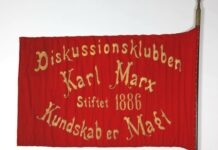

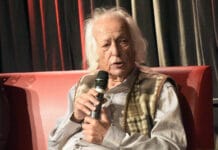
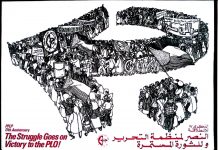
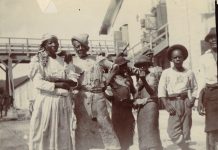
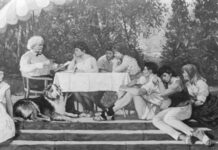


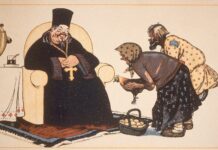
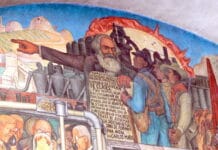



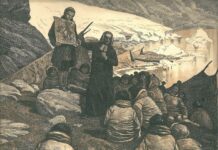

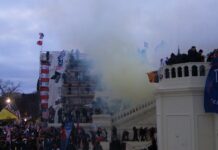


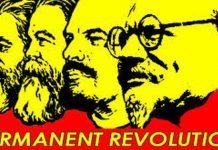











![A demonstration of workers from the Putilov plant in Petrograd (modern day St. Peterburg), Russia, during the February Revolution. The left banner reads (misspelt) "Feed [plural imperative] the children of the defenders of the motherland"; the right banner, "Increase payments to the soldiers' families - defenders of freedom and world peace". Both refer to the economic toll the First World War was having on civilian life, February 1917 (probably around March 7 [O.S. February 22]) Photo: Unknown. Public Domain.](https://socbib.dk/wp-content/uploads/2007/04/1917-februarrevolution2.1500x0-100x70.jpg)
